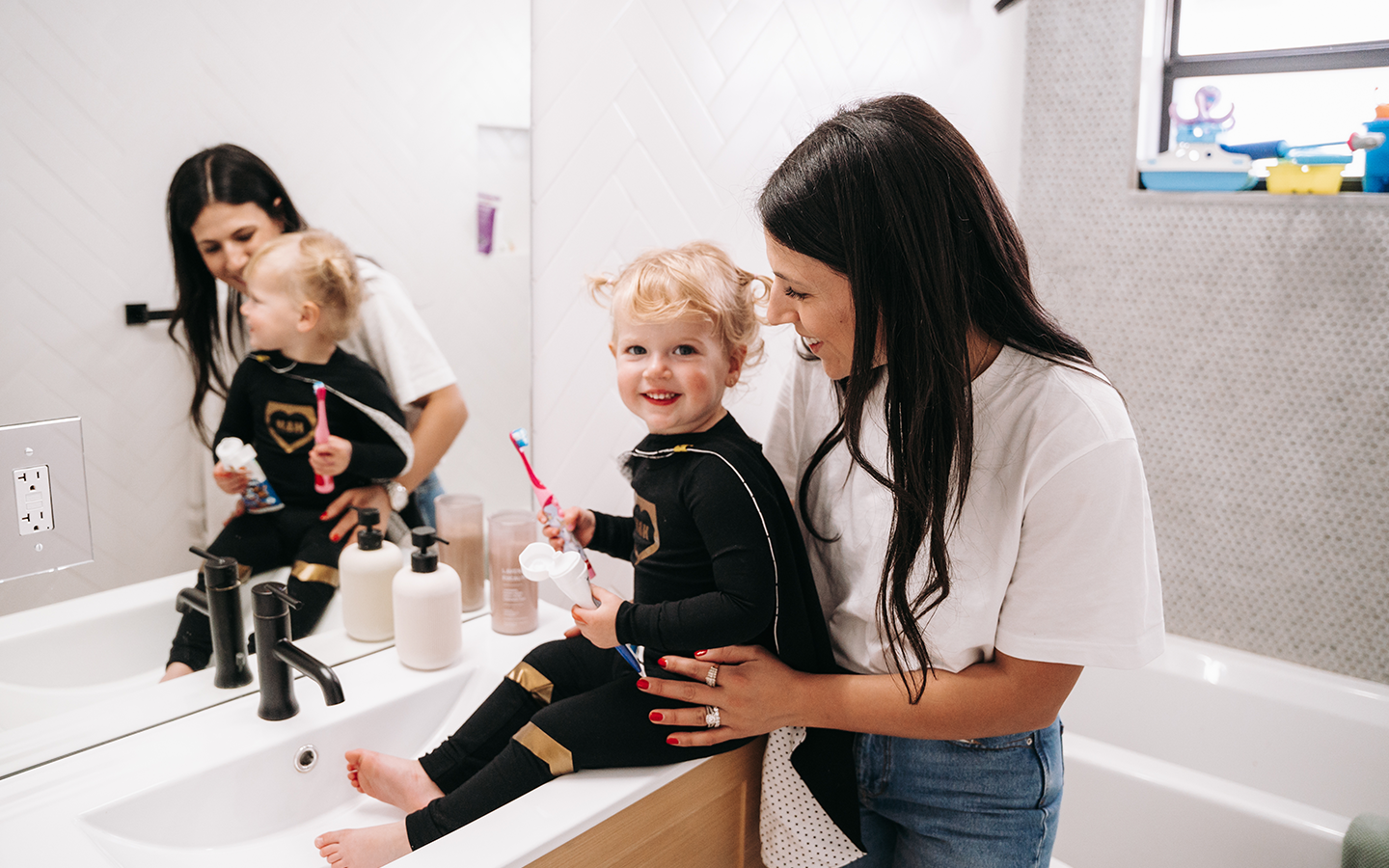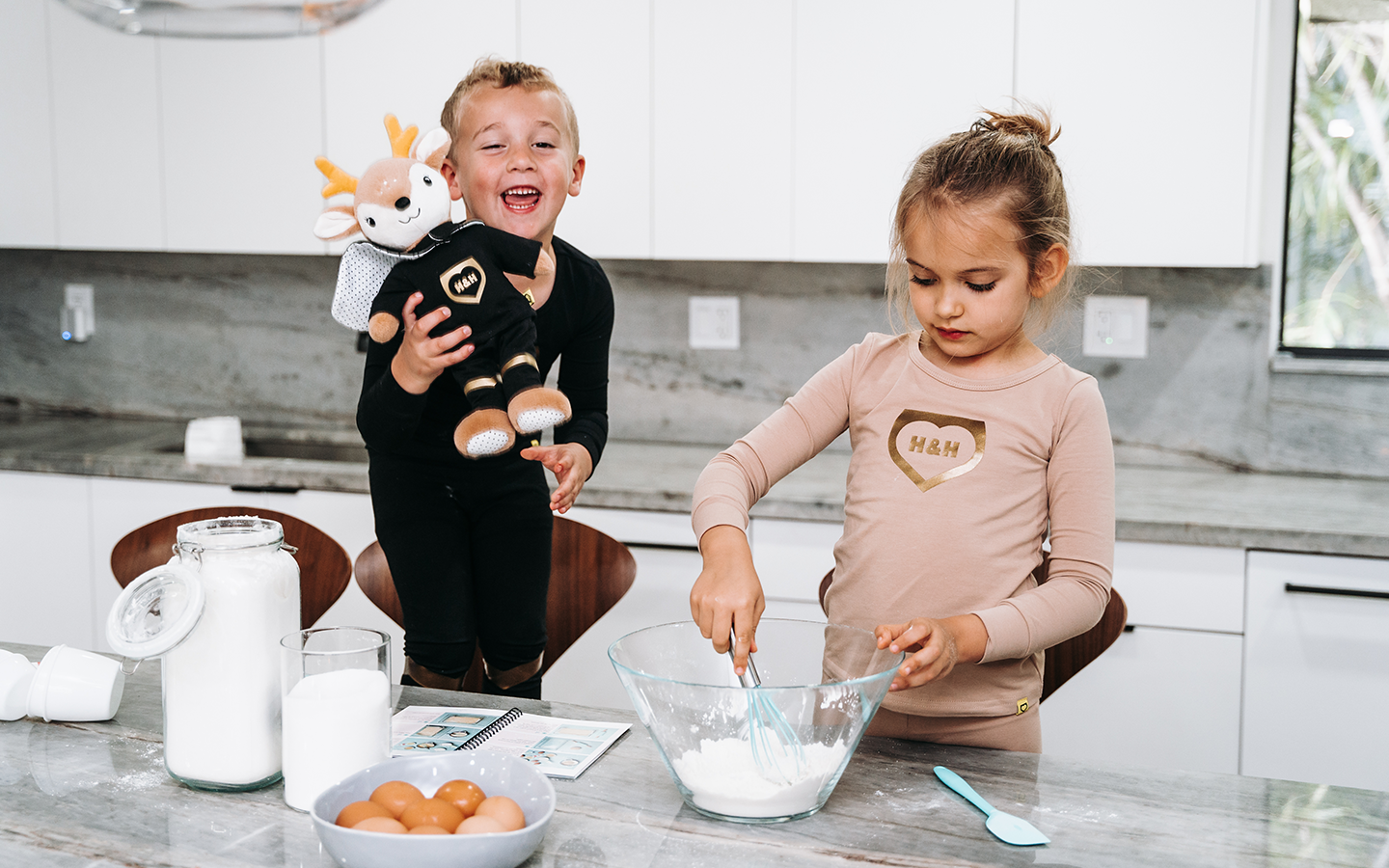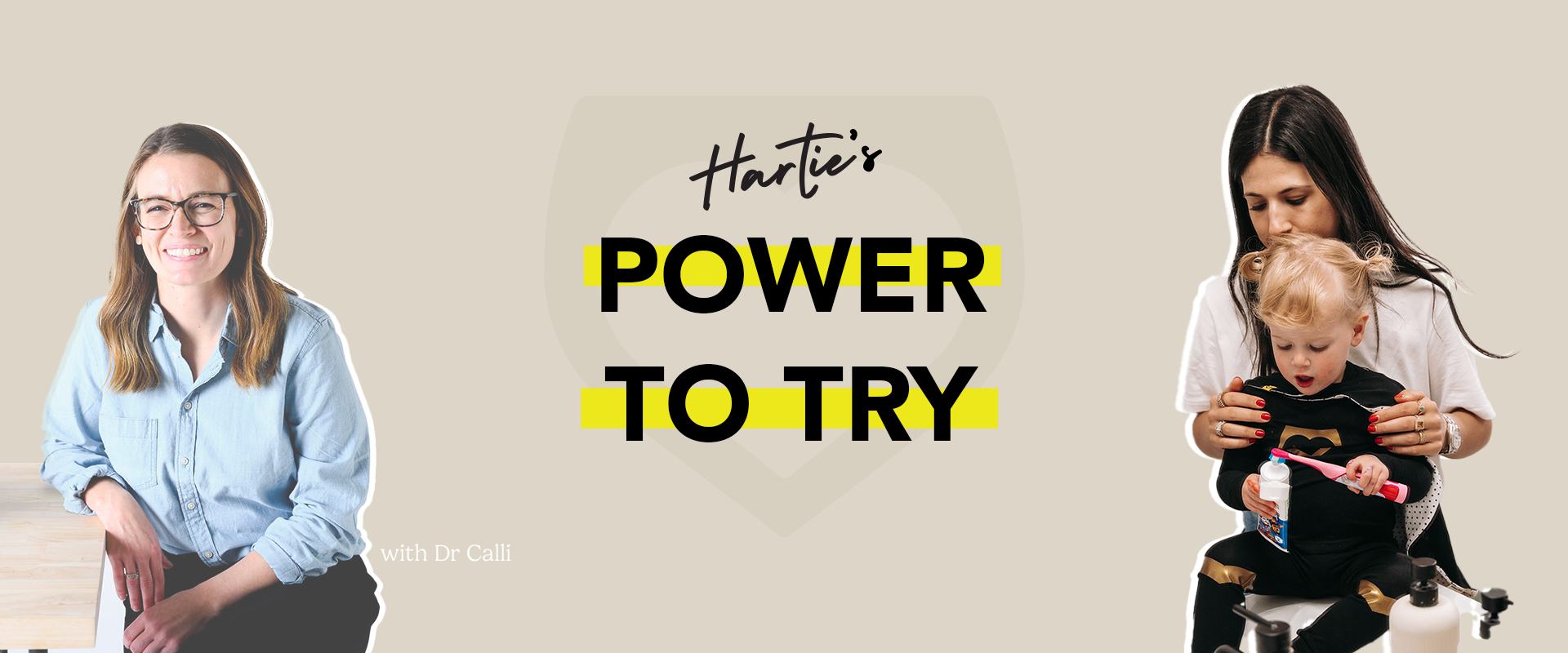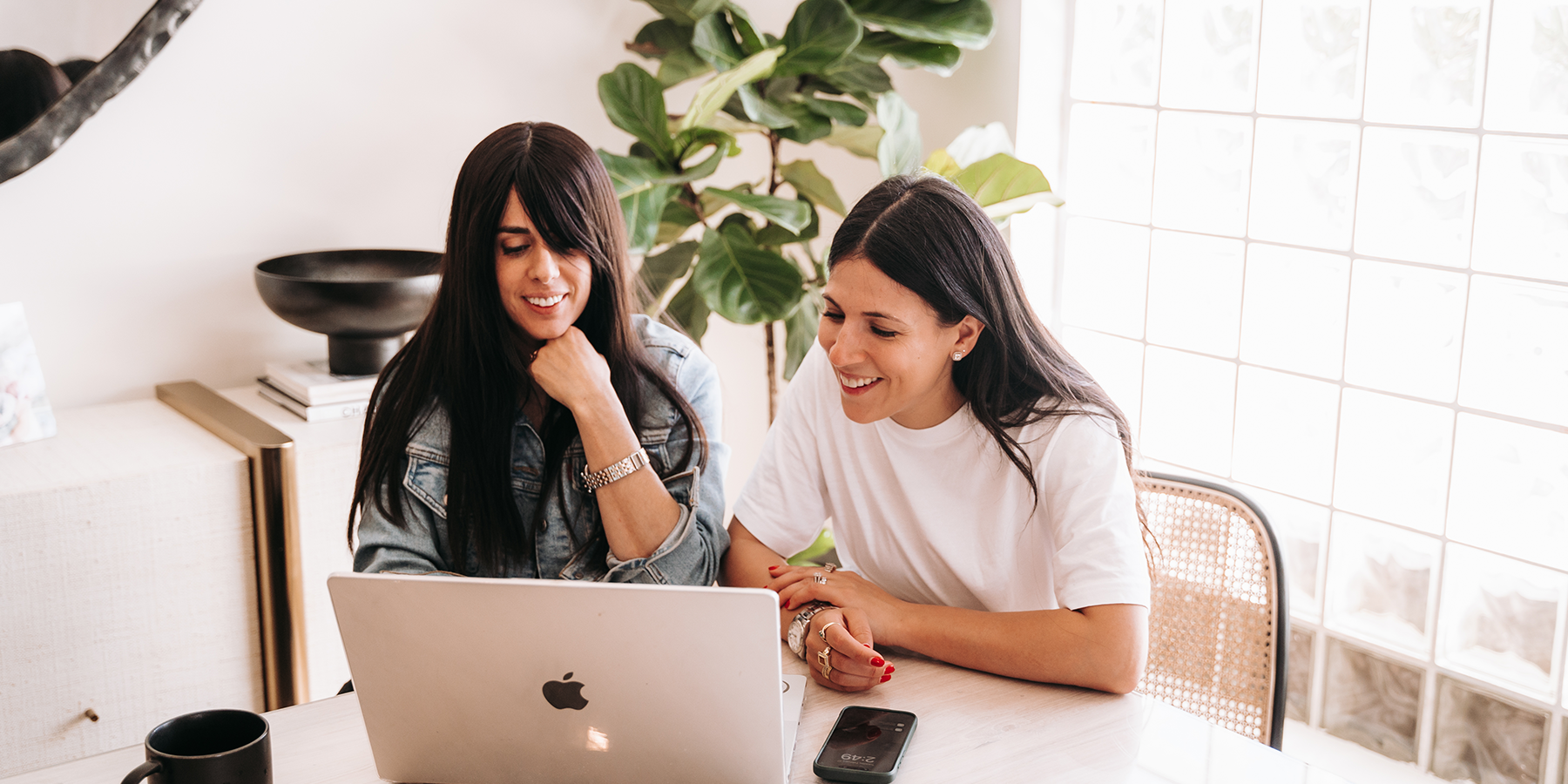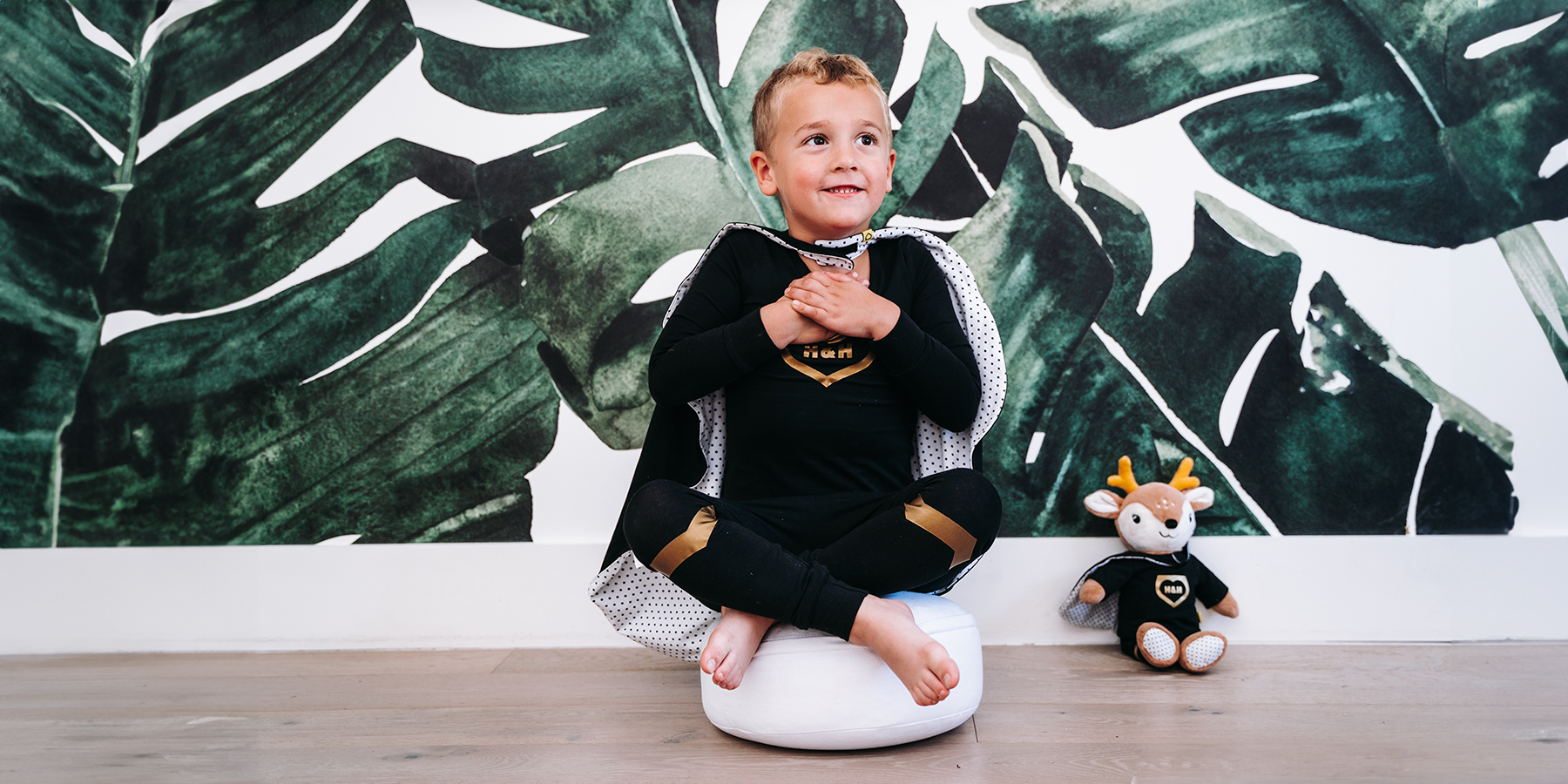Getting Dressed:
- Getting dressed involves so many different skills. It requires motor planning, balance, fine motor skills, and visual perception just to name a few. Breaking down this large task into mini-challenges builds up their confidence along the way to learning the whole task. For example, the first step to learning how to get dressed is to get undressed. Their first mini-challenge can be taking off their shorts/pants with an elastic waistband. The next mini-challenge would be taking off a shirt. Below you can see each little step that goes from easiest to hardest. If a child gets frustrated, remind them of their Trying Power and create a just right challenge for them. The Hero jammies are a great example of clothes to start working with when learning how to get dressed and undressed.
- Taking off socks
- Taking off shoes
- Taking off elastic pants
- Taking off underwear
- Taking off a jacket
- Taking off a pullover shirt
- Pulling up elastic pants/underwear
- Putting on pants
- Putting on a jacket
- Putting on an overhead shirt (not concerned about front/back)
- Putting on socks
- Putting on shoes
- Completing fasteners
- As you can see getting dressed can include several mini-challenges and plenty of opportunities to encourage them to try to do the next skill once they have mastered one.
Playing with Puzzles:
- Puzzles offer the perfect opportunity to flex our Trying Power muscle. Puzzles can be easily graded for kids, offers a variety of types, and can cater to your child’s unique interests. Below are ways that puzzles can be graded to match the skill level of your child while also working towards that next step.
- Start with inset puzzles with few pieces
- Hide those pieces in sight around a room
- Try interlocking puzzles with no more than 9 pieces with only 1 or 2 pieces not put together
- Increase the number of pieces not put together to 3-4 out of 9
- Have them try to put all 9 together with some help
- Increase number of pieces
- Use a large floor puzzle
- Use a 24pc puzzle with a wooden frame
- Continue to increase number of pieces
- Hartie is a great tool to use as a Trying Power Buddy to keep kids motivated while playing with puzzles.

In the Playground
The playground is a great environment to really hone in on practicing a child’s trying power. A lot of the time kids test their skills on a playground because they see older kids playing. On the other hand, kids can be really hesitant on playground equipment due to sensory differences. Knowing your child’s sensory profile and best ways to support them is key in this type of environment. Hartie can be a great companion when playing at the playground as a reminder to try new things, that feeling safe in their body is a feeling to trust, and a reminder that positive self-talk is a great tool to use. When using their trying power on playgrounds kids can explore new playground equipment and then learn the importance of safe risky play to build confidence.
- Below are some tips for developing Trying Power at a playground
- Practice positive self-talk on your way there. Discuss how we all have a hero inside of us.
- Talk to Hartie like you would talk to your child and make Hartie jump or swing or go down the slide
- Demonstrate for your child
- Remind them that it is okay to feel unsure but you are there to keep them safe

Dr Calli Studebaker






